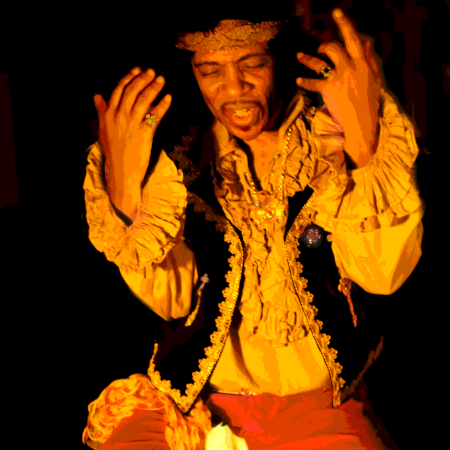Jimi Hendrix is universally regarded as the greatest rock guitarist ever. Those of us old enough to remember can recall that there were good-natured debates at the time as to who was better, Hendrix or Clapton. But Clapton was a purer blues player than Hendrix, basically building on the blues guitar giants who inspired him, like Freddie King and Otis Rush, whereas Hendrix pursued a vision and sound that owed as much to jazz giants like John Coltrane and Ornette Coleman as it did to Muddy Waters. It can be argued that while Clapton was primarily an interpreter of the blues, Hendrix was the innovator and possibly the bigger influencer.
Hendrix’s primary legacy is his sound. It’s still not fully understood how he got some of the sounds he wrung from his Fender guitars, Marshall amps, and a handful of standard effects. His version of “The Star-Spangled Banner,” performed at Woodstock in 1969, is unlike anything heard before or since – string-bending, incredible volume, distortion, feedback, and the tremolo bar as an instrument in itself. To most ears, it perfectly reflected the anger and violence of the era, especially the Vietnam War.
Hendrix’s legend doesn’t just rest on the sonic assault he created but also on his swaggering stage persona. In the 1960s, while rock was dominated by white bands and black soul singers, Hendrix was a black rock guitarist with soul. He stood out visually, wearing flamboyant costumes and, being left-handed, playing a standard Fender Stratocaster turned upside down. He writhed with the guitar, played it behind his back, behind his head, with his teeth, turned somersaults – all tricks that bluesmen had done before but that white audiences had never seen. And at the Monterey International Pop Festival in 1967, he set the guitar on fire before smashing it to bits. What could even he do to top that?
Finally, although not generally recognized for his songwriting, Hendrix was a facile lyricist whose words were genuine reflections of his own complicated feelings. The psychedelic era was about searching for meaning, and more personal expression. “’Scuse me, while I kiss the sky,” from “Purple Haze,” is simply one of the most iconic song lyrics of all time. “If Six Was Nine,” “Stone Free” and “Castles Made of Sand” reflect the era’s mood of liberation and expansiveness. “Little Wing” and “The Wind Cries Mary” are poetic ballads that are still delivered with the expected musical crunch.
It’s the tension between what the music business and audiences expected of Hendrix and what he was reaching for artistically that may have done him in. Hendrix’s death from an accidental drug overdose in September 1970 was also the first of the era’s shocking, “chic” rock deaths, followed only two weeks later by Janis Joplin, and then by the Doors’ Jim Morrison in 1971. Eerily, Hendrix was one of the first of what came to be called the 27 Club – major rock stars who died at the age of 27, including the trio above as well as Kurt Cobain, Amy Winehouse, and Brian Jones, an original member of the Rolling Stones.
Trivia: Jimi Hendrix’s real name was James Marshall Hendrix. But that was not his given name. At his birth on November 27, 1942 he was named Johnny Allen Hendrix, after his father. His parents changed it later in honor of other family names.
The WHBPAC pays homage to Jimi Hendrix and his indelible legacy on March 7th with Kiss the Sky, the #1 Jimi Hendrix tribute act in the world. Click Here for Tickets
-Bill McIlvaine
